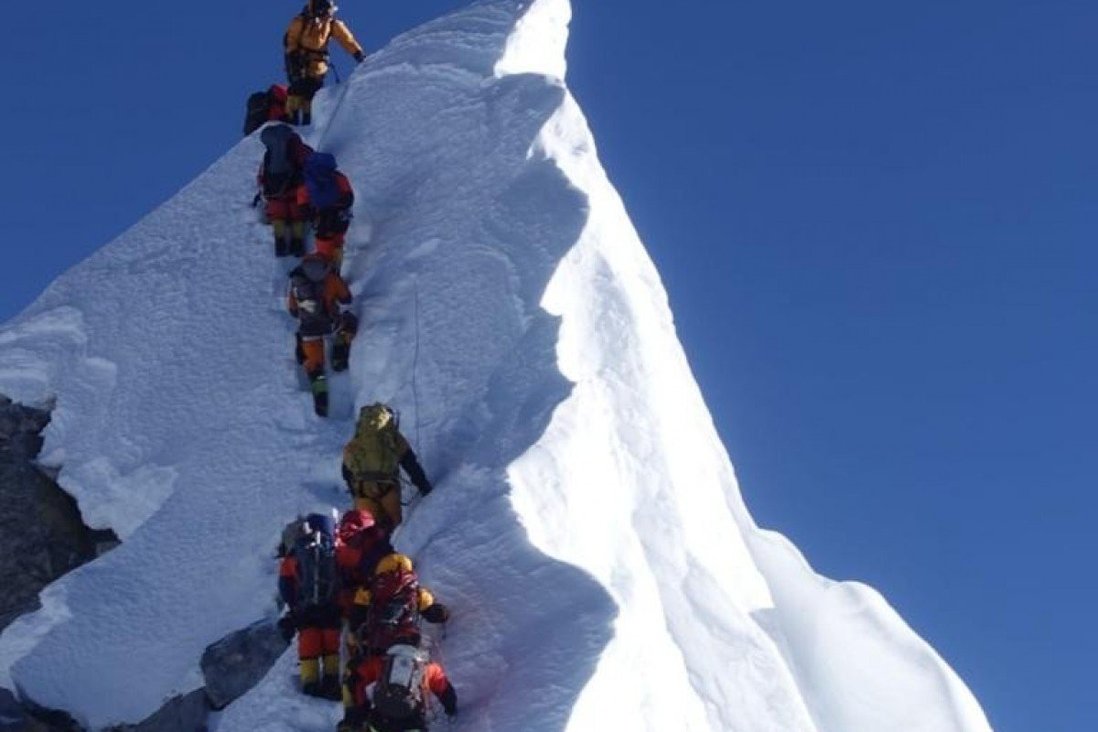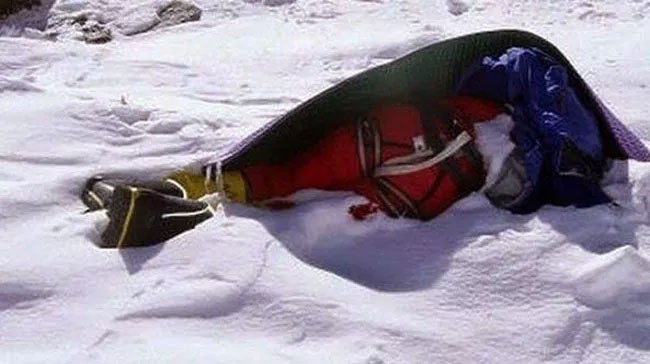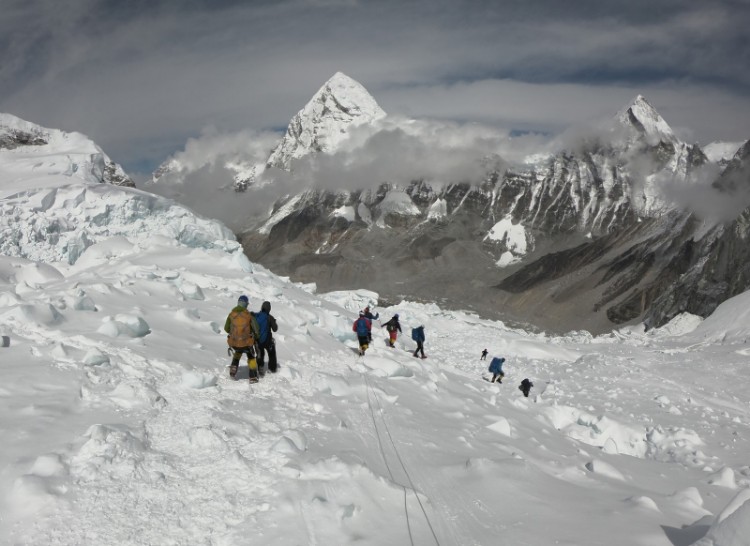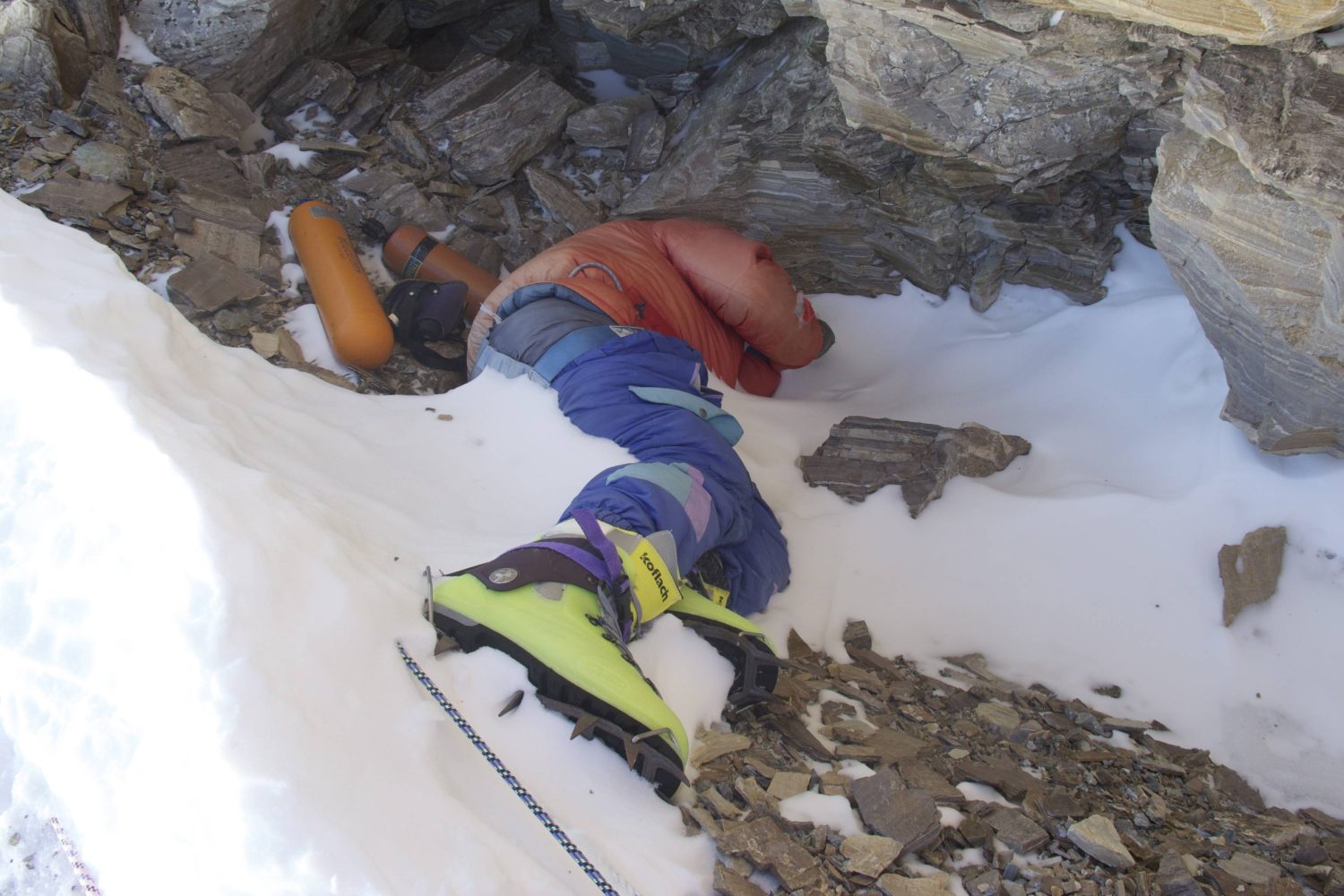Believe it or not, more than 200 people have died while trying to conquer Mount Everest, the tallest mountain in the world. Many sun-bleached and grotesquely distorted bodies remain where these unfortunate climbers died, serving as dissuasive and eerie route markers for other climbers.
The tallest mountain in the world has also gained a reputation as being the most deadly, a fact that every climber has to accept before choosing to scale Everest. Going up this mountain sometimes involves stepping over dead bodies on the way to the top.
That's before you even consider the fact that the cost of climbing up Mount Everest can be as high as $100,000, although that cost can come down to around $30,000 if you decide to do it alone. Additionally, the process can also take up to nine weeks.
However, climbing Everest remains every mountaineer's dream, and it has attracted the attention of over 4,000 climbers to date. These daredevils have to face unforgiving weather conditions and deadly terrain. The terrifying reality of dead bodies is mostly a tragic but avoidable misfortune as far as these climbers are concerned.
The Dreaded Everest Death Zone

In practice, the higher you go up this mountain, the higher your chances of ending up dead. In fact, once you reach 26,000 feet, you will be in a place they call the "death zone" because one wrong move pretty much guarantees death.
You will be making do with a third of the oxygen that typically exists at sea level in the death zone. There is also the issue of bone-crushing pressure, which can make whatever you are carrying feel ten times as heavy. Not even the Sherpas (native Himalayan people known for their mountaineering) have completely escaped the deadly perils of the death zone.
Obviously, not everyone who tries to climb the mountain can handle the weather conditions perfectly. Sluggishness, fatigue, and disorientation can easily set it. Climbers have to deal with these conditions while also navigating through very harsh terrain. That is why many unlucky climbers die under these conditions.
Those that make it often have lasting reminders of their close brush with death.
Why Take The Risk?

Ironically, the number of climbers trying to climb Everest's entire 8,848 meters (29,029 feet) is on the rise. That makes us wonder: why are people willing to risk their lives to get to the summit?
The harsh truth is that Everest has already been conquered.
The first climbers stood at their peak over six decades ago, in 1953. Today, people have reached its famous summit 7,000 times, thanks to the daring efforts of over 4,000 people.
Keeping yourself alive under these circumstances is quite a burden, and those who die are just left where they are, especially because trying to rescue dead bodies compounds the risks of dying. These dead bodies act as creepy reminders that climbing Mount Everest is flirting with death. Some of these dead climbers have gained popularity as shocking mile markers.
The Most Famous Dead Everest Climber, "Green Boots"

Green Boots is among the most famous Everest bodies, and many people on their way to the death zone passed by him.
Initially, nobody knew for sure who Green Boots was. Still, later, he was unofficially identified as Tsewang Paljor, a climber of Indian origin who died while climbing the mountain back in 1996.
Recently, the body has been removed. Before then, it was located near a cave, where it served as a sobering reminder of the perils of trying to take on Everest.
Seeing the body reminded climbers that they had made it high enough to turn back without feeling ashamed. Green Boots got famous for his neon green boots.
David Sharp, The Man Who Joined Green Boots In His Cave

In the year 2006, Green Boots found some company. A climber got in his cave, sat down, and put his arms around his knees, and froze to death.
That man was David Sharp.
He did the unthinkable by trying to get to the summit of Mount Everest alone. Even the most seasoned climbers would shudder to hear of such a plan.
Still, as someone once said, "climbing Everest is a challenge, but the bigger challenge would be to climb it and not tell anybody." David Sharp may have had such motivations urging him on during this climb.
David decided to rest in Green Boots' cave. There was nothing unusual about that, and many climbers actually rest in the cave, which has since earned the eerie name of Green Boots' Cave. However, as several hours passed, David froze and died a foot from Green Boots.
The First Man To Die On Mount Everest was George Mallory

Back in 1999, the oldest body was found on the mountain. The corpse belonged to George Mallory, who had died in 1924. That means he had been dead on the mountain for 75 years.
He was trying to be the first person to climb Mount Everest, and nobody knows if he attained his aim.
All that was left of his body by the time it was discovered was his upper torso, his left arm, and half of his legs. About him were heavy oxygen bottles and rudimentary climbing gear. He also had a rope injury around his waist. That made his finders believe that he had been tied to another climber before falling off the side of the cliff.
Nobody would know for sure if he made it to the top. Nonetheless, he has the reputation of being the first man to climb Mount Everest. Before he took on the deadly challenge, he was asked why he wanted to conquer the mountain, and his answer was simple: "because it's there."
Hannelore Schmatz, The First Woman To Die On Mount Everest

Those climbing the mountain also came to learn of Hannelore Schmatz, the first climber to get the dreaded honor of being the first woman climber to die at Mount Everest. However, she had already managed to reach the summit of the mountain, but the exhaustion she suffered on the way down was too much for her, and she died.
She was warned about setting up a camp in the death zone, but she ignored the warning.
Hannelore actually made it through the night, but she suffered from frostbite and lack of oxygen and gave in to the exhaustion when she was just 330 feet from the base camp.
Hannelore died in 1979.
Thanks to the low temperatures, her body has been quite well preserved, and she was leaning on a worn-out backpack with her eyes open when she was last seen. It is believed that strong winds eventually pushed her off. Nobody knows the location of her body today.
Sleeping Beauty, The Tragic Story Of A Daring Mom

When Francy's Distefano-Arsentiev decided to climb the mountain in 1998, the decision resulted in her death. She eventually earned the name "Sleeping Beauty."
Her son was devastated when he saw her photos on the internet.
The woman was a seasoned climber, and her goal was to become the first American woman to reach Everest's summit without bottled oxygen. She attained her goal, but the journey down proved tragic.
Her son Paul was 11 when she undertook the massive challenge. He later called, telling her not to climb because he had had a nightmare about two mountaineers surrounded by snow like attacking bees.
She died along with her Sergei in the death zone. She succumbed to exhaustion and frostbite, and when her son heard the horrifying news from his dad, he felt like he already knew his mom was dead.
The Morality Of Ignoring The Bodies

Things may have been very different when Green Boots died. However, by the time David Sharpe died, a lot more people were climbing the mountain. Reportedly, on the day he passed away, more than 40 people went by him, but none of them paid any attention to him.
It was even sadder to learn that David was still alive and visibly distressed when some of the people passed by him, which means he needed help. However, nobody bothered to help him in any way.
That started a debate about the morality of Everest climbers. Some later argued that they thought the man was resting. Others stated that by the time they learned of his predicament, they were not in a position to help.
Sir Edmund Hillary, the first man to ever reach the peak, was outraged. He was critical of climbers who ignored Sharp in their singular goal to reach the top. After learning how Sharp died, he had this to say:
"If you have someone who is in great need and you are still strong and energetic, then you have a duty, really, to give all you can to get the man down and getting to the summit becomes very secondary. They don't give a damn for anybody else who may be in distress and it doesn't impress me at all that they leave someone lying under a rock to die."
A year later, Sharpe's parents requested that his body be removed from sight. However, Green Boots still remained, at least for a while.
Recovering The Bodies Is A Dangerous Undertaking

The fate these dead climbers faced is the same problem those looking to rescue them have to encounter. In the death zone, recovering a body is pretty much impossible due to the terrain, the tough weather conditions, and the lack of adequate oxygen.
Additionally, the bodies are usually firmly stuck where they are located since they have been frozen into place.
As a matter of fact, a lot of people have died trying to rescue dead climbers. For instance, two people lost their lives trying to rescue Hannelore's body.
That partly explains why many climbers are not keen on rescuing the bodies, although they don't seem to have a problem attempting to do the very thing that cost these poor climbers their lives - conquering Everest.
Why Do People Still Climb Everest Today?

These days, it's doubtful that people are climbing the mountain to break a record since that has already been done thousands of times. In most cases, people see conquering the mountain as a sign that they have overcome their own personal challenges. In fact, the media likes to call it "summit fever," whereby ambitious climbers will not let anything get in their way of reaching the top of the mountain despite the dangerous odds stacked against them.
Some people simply want an amazing place to spread the ashes of their loved ones. Others do it to tick the challenge off their bucket lists. Of course, some bear the terrible discomfort of climbing up Everest to feed their egos. After all, climbing a mountain is not the most interesting thing ever. Climbers have to climb slowly as they adjust to the altitude over several days, a laborious and boring affair that does not exactly fill the climbers with adrenaline.
It is also possible that the possibility of dying adds to the thrill of conquering the imposing mountain because those who make it feel like they could escape the jaws of death. There is something special about defying death.
Counterphobia might also have a role in this. This is whereby people do the things they fear as a way to overcome them. That is probably why mountain climbers seem so fearless and devoid of self-preservation instinct.
How The Climbers Die

Avalanches kill most of these climbers, followed by falls and exposure to frostbite.
Nepal is also the leading source of the dead, followed by Japan, the UK, India, the USA, and China. Surprisingly, most people die preparing the route, followed by those descending from the mountain's summit.
Still, not all climbers are able to ignore the bodies and keep climbing to the summit.
For instance, in 2010, Geert van Hurck was so upset after coming across a body that he decided going past it and celebrating at the summit was not worth it. He returned to the camp, deeply upset. However, this decision is not very common among Everest climbers.
What Should Be Done About The Bodies?

The cost of recovering the bodies and repatriating them can be staggering, which is why many corpses are simply left on the mountain. In any case, efforts to rescue the bodies often pose deadly risks to those involved since they have to be dug out of ice.
Apparently, a body weighing 80 kilos can weigh about 150 kilograms when frozen.
That said, some mountaineers want their bodies to remain on the mountain after they die there, like seafarers often desired after dying at sea.
Not Everyone Is Happy With The Bodies Lying Exposed On Te Mountain

Having all those bodies strewn around Everest does not sit well with most people. According to Jenkins, a climber, leaving the bodies around is "no longer acceptable." He had to go past four bodies the last time he was climbing Everest.
Jenkins might have a point.
Tsewang Paljor's brother, Thinley, was quite upset to see his brother's pictures everywhere. He was also shocked after learning that he was now disrespectfully nicknamed Green Boots. Thinley was not keen on sharing the news with his family as he was himself quite upset. He felt so helpless:
"I just pray that my mom will never know about the Green Boots thing. She would be very, very, very upset. I can't even imagine."
One of the best options is to push the bodies out of sight when the families cannot afford to repatriate them. However, this has been criticized as a risky affair that can lead to more fatal accidents. Nevertheless, a lot of effort has been made to dispose of the bodies more respectfully. A climber recalls seeing up to 10 bodies during a climb, but that number has significantly gone down in recent times.
Otherwise, people continue trying to conquer Everest. The possibility of a distressing death is clearly no deterrent for these climbers.



